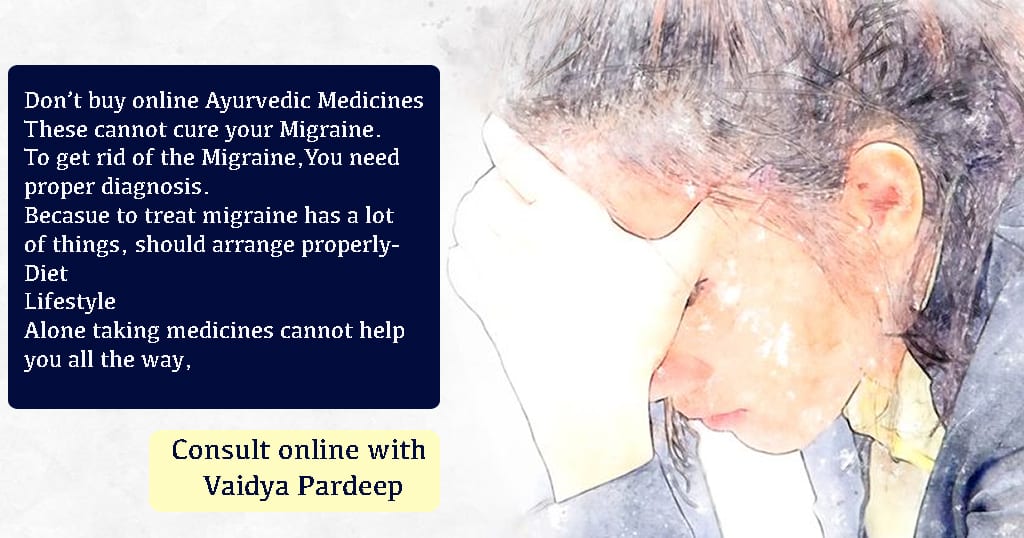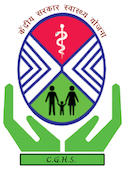So you are on this page because of your headache. The headache which we all know as Migraine. I am Vaidya Pardeep Sharma M.D. (Ayurved) from Sukhayu Ayurveda and here I will discuss all aspects of Ayurvedic treatment of migraine.
90% patients of Migraines keep buying medicines from the internet in name of Ayurvedic treatment for their problem. They don’t know that it’s not a real cure, but they are just looking for any type of relief—anything to help them feel better. This is the reason at Sukhayu we focus on helping our clients understand what causes these migraines and how best to treat this debilitating condition so you can finally start feeling like yourself again!
In order to help you find the solution to your problem, first, let me tell about my own story. I am a patient of Migraine and like many others who are suffering from this illness, medicines have become our only option in treating it. But that doesn’t mean we stop looking for different solutions! That is why at Sukhayu we don’t SELL or SUGGEST medications—we try everything possible so that patients can get rid of their pain.
- Your headache is more than 6 months old.
- A complex condition to treat.
- You face unbearable pain which makes you bang your head here and there.
- These “pain-attacks” lead you to “panic-attacks”.
- As a patient, you might end up vomiting.
- Causes of Migraines are yet to know.
- Allopathy doesn’t have any treatment for this condition.
These points are enough to tell about the severity of the condition. But you need not give up. There are few things in Ayurveda that makes the condition curable-
- The exact diagnosis of the cause.
- A better understanding of the condition like Migraine.
- Quick and Easy Treatment.
- No-Risk and Side Effect of – Painkillers.
When it comes to the treatment of the Migraine, it is not alone medicines. Until unless you don’t remove the cause behind migraine, you cannot treat the condition. Ayurvedic concept of Doshas is something very important in this. This is why I have never took more than 6 months to completely eradicate the Migraine completely.
My experience with Ayurvedic treatment of Migraine.

Here are some interesting facts about migraines.
Facts About Migraine
- Migraine is a condition that is the third most common condition. So you are not alone.
- It is a common condition between the ages of 18 to 44 years.
- More females suffer from this condition than males, as per the data. So when you are a female between 18 to 44 you have more chances to get migraines.
- For a long, it was thought that migraine impacts one side of the head. But in 1/3rd of cases patients complain about pain in the whole head.
- Migraine is not just a headache, there is much more than a headache. Thus you need to be more aware of treatment options.
- Many neurological conditions appear along with this condition.
- Migraine is common because many conditions are misdiagnosed with migraine.
So with all these complexities Migraine is an interesting condition to know more about this. Once we understand this condition better, it becomes easy to solve this puzzle.
Understanding Migraine
A recurring, severe headache with sensory warning signs is Migraine.
Every patient has a different pattern of headache. And because of different patterns of headaches, it is challenging for physicians to make a proper note of the condition. It took years for scientific communities to comment that Migraine is not just a headache. To understand Ayurvedic Treatment of Migraine, we need to understand this.
Of the many patients who report headaches, only about 10% have an underlying medical disorder. The other 90% suffer from benign headaches, which are classified as –
- Muscular Contraction (Tension Headache) and
- Vascular Headache (Migraine or Cluster Headache)
- A combination of both of the above.
The incidence, precipitating factors, and associated signs and symptoms – differentiates both types markedly. Because of these complexities, Migraine is misdiagnosed most commonly.
Conditions which are misdiagnosed as Migraine
Here are some simple as well as complex conditions which is commonly diagnosed as Migraine-
Cervical Pain:
Generally, the pain of the cervical radiates to the head. When there is an involvement of the higher discs- symptoms of headache are more common. The pain radiates from the back of the head or behind the ear and radiates to the front. Because this pain radiates to one side of the head, this commonly makes confusion between the patient and the doctor.
Sinusitis:
This is the second most common condition, misdiagnosed with Migraine. When frontal and ethmoidal sinuses have congestion, this misdiagnose is more common.
Anxiety:
This is the third most condition that is misdiagnosed as migraine. Because the patient defines the problem as similar to migraine and there is no diagnostic test for this condition. Therefore this misdiagnose is common.
To get rid of this kind of misdiagnosis, the main duty is to the patient. The patient should take care of the following things-
- Never visit your doctor with your Diagnosis!!
- Share the exact location and precipitating causes behind headaches.
- Don’t underrate or exaggerate your symptoms.
- Believe in your physician to make a proper diagnosis.
When you help your physician, your physician can help you better and this is the base of Ayurvedic Treatment of Migraine.
Remember only less than 40% of patients get the right diagnosis in case of Migraine! Don’t be misdiagnosed.
What are the Types of Migraine?
Headache is a headache only. But when it comes to migraines. This condition is of two types.
- Migraine with aura
- Migraine without aura.
Here one thing in common which is a headache. But what makes a difference is- Aura. So we need to just know about the Aura.
Aura is a temporary condition with visual and neurological symptoms. Signs of Aura start appearing 30 to 60 minutes before the actual attack of migraine. But in few cases, the aura can appear without headache.
The signs where you get disturbance with your eyes and vision are following-
- Flashes of light.
- Stars and shimmering spots in the field of vision.
- Blind spots in the vision area.
- Changes in vision or vision loss.
There are few other neurological symptoms that also appear in the aura state of migraine are-
- Numbness on the face, upper arm, and shoulder (This can happen in cervicogenic headache – headache caused by cervical).
- Problem with speaking clearly.
- Weakness in upper body parts.
So we know much about the Migraine. But does really Ayurveda know about this disease?
How does Ayurveda approach migraine?
And what is the possibility of a cure for Migraine with Ayurveda?
In this half, we will discuss these questions one by one…

What Does Ayurveda say about Migraine?
Ayurveda talks about headaches.
Headache in Sanskrit is – Shirahshool.
This word comes from two words- Sirah and Shool. Sirah is- Head and shool is pain/ache.
So the mere difference is just of language between headache and shirahshool.
Headache comes as a disease and as a symptom in many conditions.
Understanding all these helps in Ayurvedic Treatment of Migraine.
As per Ayurveda, when headache appears as a condition of fever- this is just a symptom. Opposite to this, when this appears as the main condition this refers to a disease.
The base of Ayurveda is three doshas. Everything happens because of these doshas.
And treatment also goes according to these three doshas only. So the details about headaches are according to the signs and symptoms alone.
What are the subtypes of headache as per Ayurveda?
Headache is classified in the following subtypes as per Ayurveda.
- Vataja Shirahshool – Headache caused by Vata Dosha.
- Pittaja Shirahahool– Headache induced by Pitta Dosha.
- Kaphaja Sihirahshool– Kapha Dosha induced headache.
- Sannipataja Shirahshool– Headache where all the three doshas are vitiated.
- Raktaja Shirahshool– Headache caused by vitiated blood.
- Kshayaja Shirahshool – Headache which occurs because of decay in Dhatus in the head region.
- Krimija Shirahshool: Headache caused by external infection.
- Suryvarutta Shirahshool: Headache which changes its intensity according to the movement of the sun.
- Anantavata: This is not a headache exactly. This is a throbbing pain that occurs in the face- eyes, and ear. This is a condition closer to Trigeminal Neuralgia.
- Ardhavbhedaka: Headache in half head- hemicrania.
- Shankhaka: Pain in the temporal region.
Migraine is close enough with Ardhavabhedaka and Vataja Sirhahshool. But this is no definitive analogy. Migraine is a complex condition and we need to understand the complexity in terms of the Doshas too.
What is Migraine as per Ayurveda?
Migraine is a condition with the involvement of all the doshas. This comes under the discretion of an Ayurvedic physician to make a decision about the doshas.
Therefore, the first thing about the diagnosis of migraine is to make a diagnosis about the Doshas. Here are some confirmative criteria to know the involvement of doshas in case of headache/migraine.
| Vata in Migraine | Pitta In Migraine | Kapha in Migraine |
| The onset of pain without any reason. | Pain starts with hot food, warm temperature. | It complicates with coldness. |
| Pain relieves by tieing up head with a cloth. | The cold application reduces pain. | Pain reduces with warm and hot treatment. |
| Pain increases in the night. | Midday and midnight are the time for aggravation of pain. | Pain is maximum in the first half of the day. |
This is okay to explain headache in terms of Ayurveda. But a question remains unanswered for years about Aura. So here we need to know about the Aura too-
Does Ayurveda believe in Aura in Migraine?
Ayurveda believes in Doshas. But there are certain supportive concepts too to complement the thoughts of Doshas. The definition of the Aura can be easily explained according to the concept of Dhatus.
This is the Rasa Dhatu which clearly explains the condition of Aura. When we look at the symptoms of Rasa Kshaya- depletion of Rasa dhatu, it clears all doubt about the aura condition of migraine.
The symptoms of Rasa Kshaya are-
- Photophobia. (शब्द असह्यता )
- Irritation to loud music or voice. (प्रकाश असह्यता)
- Palpitation (हृदग्रह)
- Feeling of numbness in the body.
- Blackout (मूर्च्छा).
These are the symptoms of Aura. And amazingly headache is mentioned as a symptom of the same condition too.
So to explain the complexity of Migraine, we need to work on many fronts. This helps in making a proper diagnosis of the condition. This is the reason, without consulting a physician you should never make a diagnosis by yourself.
Now we can draw a line for the treatment of this complex condition of migraine.
Ayurvedic Treatment of Migraine
रोगमादौ परीक्षेत ततो अनन्तरं औषधम!
This Sanskrit verse from Charak Samhita means –
Before selecting any treatment and medicines. A good physician will diagnose the disease. And here a physician should have the knowledge about all aspects of disease and patient. Only after that a physician should select a medicine or treatment.
The same approach should be for the treatment of a condition like a migraine. Pharmaceutically there is no medicinal guideline for complex headaches like migraines.
This is the only reason, at Sukhayu Ayurved we don’t believe in selling medicines in any condition or any disease. Without consultation, how can we know about a patient? And when we don’t know a patient- it doesn’t make any sense to suggest some medicines.
Therefore the tenfold examination of a patient is mandatory for the selection of medicine for Migraines. The Ayurvedic treatment of migraine goes according to Doshas involved in the condition. We work on a distinctive approach to the treatment of migraines.
The approach of Migraine treatment
There are few steps we follow to ensure the complete treatment of the condition.
- It is important to ensure reduction in-
- Frequency of headache.
- The intensity of pain.
- To remove the excessive Dosha which is the main factor behind the disease through Panchakarma treatment.
- Pacification of dosha through medicines.
In most cases, the aggravation of doshas is not too much in migraines. Therefore we just use medicines alone for the treatment. There are only a few cases where panchakarma is required.
Medicines for Treatment of Migraine
Medicines help in the pacification of doshas. Therefore the selection of medicines in case of migraine is always dependent on the condition. Once we are sure about the root cause of the problem and involvement of Doshas- only then medicines can be selected.
Medicines just help to control the internal environment of the body. Therefore these cannot be the main tool for the treatment of migraine.
Food and lifestyle are also important factors to control for the successful treatment of migraines.
Because migraine is closely associated with hormones and prevalence is high in females. This is important to keep a close watch on gynae health and the hormonal imbalance of the condition.
So there is no fix pattern of selection of medicines in case of migraine. Everything depends on the diagnosis of the condition.
Panchakarma Treatment for Migraine
When it comes the treatment of Migraines, panchakarma is an important role. The basic thing with a selection of migraine treatment is to know about the root cause of the problem. Therefore we cannot comment on the one rule about panchakarma. But depending on the cause of the problem different panchakarma procedures can play an important role in the treatment of the condition.
Which Panchakarma procedures can help in treatment of Migraine?
There are many panchakarma procedures which play an important role in the treatment of the migraine. But here are the procedures which we plan as per the involvement of the doshas.
| Dosha behind Migraine | Panchakarma Procedure |
| Vataja | Shirobasti (Holding Oil on scalp) Basti Chikitsa (Medication through Anal Route) |
| Pittaja | Virechana (Induced purgation) Application of Herbal pastes |
| Kaphaja | Vamana (Induced vomiting) Nasya (Medicines through Nasal Route) |
The above table is all about Doshas. But in the case of cause, which is as per western medicines diagnosis- selection of Panchakarma procedures is from a different point of view.
| Cause of Migraine | Panchakarma Treatment for Migraine |
| Neurological | Basti and Nasya treatment |
| Hormonal | Virechana and Nasya panchakarma procedure |
| Vascular | Raktamokshana and Virechana |
| Sinusitis | Nasya |
| Cervicogenic | Complete resolution of cervical problem |
Ayurveda is all scientific. Therefore treatment of migraine is very pinpointed and result oriented. When you plan for the Ayurveda treatment of migraine through Ayurveda you should have a complete consultation with a good Vaidya. Only after that, you can have a proper cure for Migraines.
All you need to know about Migraine treatment in Ayurveda
Yes, migraine is curable through Ayurveda. Here the main thing is to find out the root cause behind the problem. Once the root cause is underlined and proper treatment executes, it leads to the complete cure of the condition.
The exact duration is according to the root cause of the problem. In some cases where a migraine is because of the imbalance of the gastrointestinal system- it looks very much less time. But when the cause is hormonal it takes a long time to treat the condition.
Not really in migraine. But where the headache is only because of anxiety, Shirodhara helps a lot.
Conditions like migraines should not be overlooked. Your headache might be a serious condition too. So you should visit your nearest physician to evaluate the condition.













